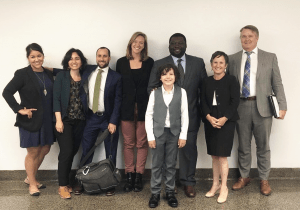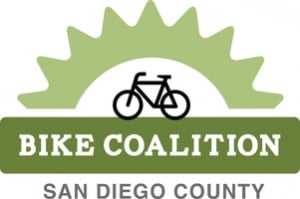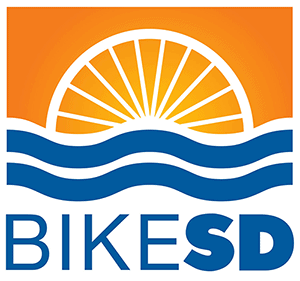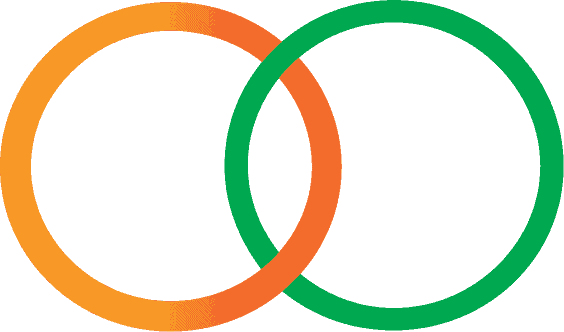Our process for building transportation infrastructure is slow and expensive, even for bike projects. A simple protected bike lane will commonly require five years from approval to construction. Quick-build street design projects are an exception. They get bikeable and walkable infrastructure projects built fast and affordably. Quick-build is more vital than ever since the COVID-19 pandemic. California cities and towns need to reallocate street space quickly to allow businesses to reopen safely, protect workers, and meet the rising demand for safe biking and walking.
CalBike has made quick-build street design a major priority in 2020. To kick off this campaign, we are working on a toolkit that cities can use to guide them through the quick-build process.
Here’s what you need to know about quick-build street design, plus what CalBike is doing to bring quick-build street design to more California streets.
What is quick-build?
The normal timeline for projects that add Complete Streets elements or otherwise change streets to make them safer for bike riders and pedestrians can stretch for years and years. From conception, to inclusion in a community plan, project planning, community engagement, grant application, grant award, additional engagement and project amendment, grant expenditure (often many years after the award), and finally project construction, a project can easily take more than ten years.
Some projects, such as a new bike bridge, have big price tags and require longer timelines. But smaller projects, such as adding a bulb-out to reduce the width of a pedestrian crossing or adding a protected bike lane, don’t have to be costly or time-consuming.
The first part of quick-build street design is to use low-cost measures. Staffers or contractors can create pedestrian bulb-outs or a new bike lane with paint and bollards. Simple signs or heavy planters serve as traffic diverters. Most quick-build projects can be constructed in mere days or weeks. They can go from conception to reality within months. The measures are also temporary, designed to be removed or changed. Quick-build street design is literally not set in stone (or concrete), so elements can be changed in response to on-the-ground feedback.
That feedback to the actual temporary design becomes the public input process for the eventual project, if the public supports making it permanent. It is usually much better than traditional planning processes, where stakeholders are asked to imagine how it will feel to use a new street alignment based on renderings and PowerPoint presentations. It’s not surprising, under those circumstances, that many community members are resistant to implementing Complete Streets designs that will change how they navigate their environment.
Quick-build projects extend the public comment period beyond implementation. Unlike asphalt and concrete infrastructure, quick-build street designs can be easily adjusted by adding a planter box, moving bollards, or restriping a lane.
While planners design and implement quick-build projects using “temporary” materials, many end up becoming permanent. In some cases, planners add upgrades that started as quick-build to future repaving projects. It turns out, however, that the hardscape infrastructure that has been the standard for traffic engineers for decades is not always necessary. Quick-build improvements like colored paint, soft-hit bollards, or planter boxes can safely delineate projects for years.
Examples of quick-build street design
Bicycle advocates have long used the refrain, “It’s only paint” to promote quick-build projects. Paint is cheap to install and easy to undo. The secret is that, if communities get to live with new quick-build projects, they like them.
Perhaps the most famous examples of successful quick-build projects in the US are New York City’s move to pedestrianize portions of its busiest squares. These projects, which divert traffic on some of the busiest streets in the most populous city in the US, rely mainly on paint and planter boxes to create boundaries where bikes can ride through on separated paths and pedestrians can escape crowded sidewalks. These plazas include outdoor seating that provides a welcome respite for weary tourists and locals in search of fresh air. They were an instant hit.
Quick-build has arrived in California. When a pedestrian was killed by a car driver in Oakland in 2017, the city was able to quickly improve the street design with bollards and paint. After adding bike lanes and brightly-colored pedestrian refuges, OakDOT reported a small decrease in speeding and a more than 80% increase in car drivers yielding to pedestrians.
Go Human Open Streets & Safety Pop Up Events from SCAG on Vimeo.
The Southern California Association of Governments used tactical urbanism (another term for quick-build) in conjunction with its Go Human safe streets campaign. The project installed temporary bike lanes, bulb-outs and other active transportation features in cities around the region. This project used quick-build as a way to get better community feedback on potential safety improvements. The tactical urbanism approach also built engagement and support. The project made street design fun by hosting Open Streets and other events.
Amid the current pandemic, the need to respond quickly to changing circumstances is greater than ever. Many California cities have created Slow Streets to provide safe space for physically distanced outdoor recreation. Often, the only infrastructure needed is signs and portable barricades.
As California moves out of its current stay at home phase of COVID-19 response, communities will need to move quickly to adapt to the new realities of living with an ongoing pandemic. We can’t wait three to five years to plan and fund new bikeways and wider sidewalks. In addition, city and county budgets have been decimated by the crisis. Planners will need to do more with less. Quick-build is the perfect tool to help local governments deal with the changes brought by the coronavirus.
Pros and cons of building it fast
Facebook’s motto of “Move fast and break things” shouldn’t be applied to urban planning. Quick-build comes in for some justified criticism. The speedy planning and implementation process has both benefits and challenges when it comes to community engagement. Here are two of the biggest issues around community engagement.
Pro: An end-run around knee-jerk NIMBYism
If you’ve ever been to a public meeting about a streetscape project, you have heard the NIMBYs speak. They fear that the bike lane you’re advocating for is designed to drive them out of their cars. They worry that it will take them longer to drive to the store. Or they may be anxious that their neighborhood will be overrun by “those people.”
It makes sense that people fear change, particularly people who are invested in the car-centric status quo. Quick-build does an end-run around this fear. It lets planners put “temporary” improvements in place on a trial basis. With designs in place, planners and users get to see what works on the ground, rather than in theory. Residents often find that traffic nightmares don’t materialize and the safety benefits are nicer than they expected. The hard-core NIMBYs may be difficult to win over. However, the support of community members who like the change once it’s in place can help overcome objections and keep quick-build improvements in place.
Con: Limited time for community engagement
There is a downside to the limited public engagement that is a feature of quick-build projects. The short timeline rarely permits the kind of outreach needed for a truly inclusive planning process. However, planners can and should foster an inclusive evaluation process. Community engagement after installation should include people from marginalized and disadvantaged communities. The process has to address the transportation needs of people who are often shut out of planning processes.
Inclusive design takes work. The quick-build process doesn’t absolve planners from the obligation to reach out to communities whose voices are less often heard in the planning process. However, quick-build projects often respond to majority desires for safer walking and biking space. The process is less likely to allow those needs to be shouted down by a few loud voices.
CalBike’s own quick-build project
Here at CalBike, we have a quick-build project of our own. We are working with Alta Planning + Design to create a quick-build toolkit. The toolkit will give municipal planners the resources they need to use quick-build street design for their urgent projects. It will give community advocates the tools they need to win commitments from local officials to make our streets safer, quickly. It will give elected officials the encouragement and rationale for not waiting for the next round of grants. Instead, they can meet their public’s demand for safer streets right away.
Our Quick-Build Toolkit project is itself on a fast track. We expect to have it ready for distribution sometime this summer.
Finding more funding for quick-build street design
In addition to our toolkit encouraging quick-build projects, CalBike is working to increase the state commitment to this low-cost and accessible way of making our streets safer. We are working with regional agencies to help them find funding for local governments to implement quick-build projects.
We support the California Transportation Commission’s decision to set aside $7 million from the next round of ATP projects for urgent quick-build projects. The Commission delayed the next ATP round due to COVID-19 impacts, but it promises an expedited review for any project applying for the $7 million in quick-build project funding. Applications for these projects are due soon. We are also advocating for quick-build infrastructure money in federal stimulus packages.
At CalBike, we want everyone who is able to get to choose to bike to work. We want safe space for children to explore their neighborhoods on foot, scooter, bike, or skateboard. Our commitment to finding practical, workable ways to build the safe and equitable streets that California needs is stronger than ever. We believe that quick-build is one of the best tools for achieving this goal. That’s why we’re building the toolkit. It is why we plan to put the toolkit in the hands of every public works and planning department staffer in California. At the same time, we will be working with state agencies to remove any barriers to quick-build projects that might keep cities from adopting this important tool.
You can help by supporting our quick-build campaign.





